And below a few from the achieves.
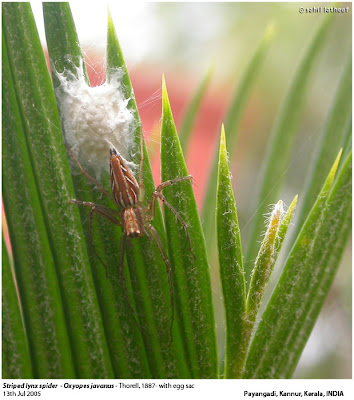

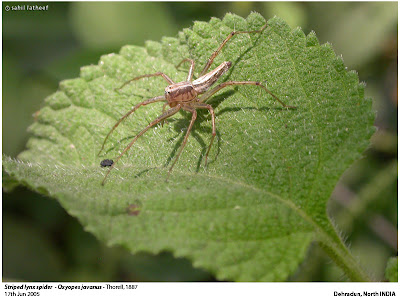
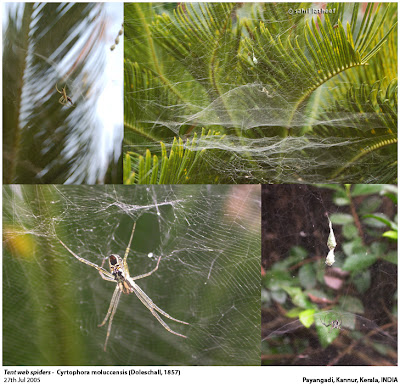
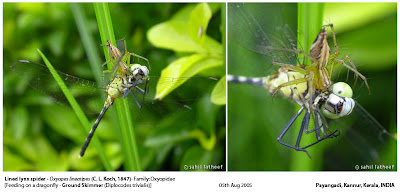 The Above one is my my favorite of the series.
The Above one is my my favorite of the series.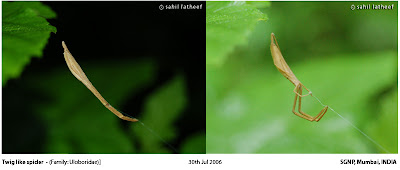 And I'll end with one which posed quiet a difficulty for me to Identify. I got lots of help from the SpiderIndia Yahoo group and in particular from Mr. Sudhikumar. Attached below is his reply about the ID of this particular spider that I snapped in SGNP, Mumbai.
And I'll end with one which posed quiet a difficulty for me to Identify. I got lots of help from the SpiderIndia Yahoo group and in particular from Mr. Sudhikumar. Attached below is his reply about the ID of this particular spider that I snapped in SGNP, Mumbai.(Dear Latheef,
Most probably that is a Miagrammopes sp of family Uloboridae.
Identification features: Cephalothorax appears flat and thin, with the thorax, cephalus and clypeus all horizontal but rounded at the sides in lateral view. From above, carapace is about twice as long as wide with straight sides, which are parallel or slightly diverging to the front until reaching the posterior lateral eyes. A dry twig like body with prominently longer than wide cephalothorax and elongate abdomen, four eyes (all PE) in a transverse row with PLE on a lateral tubercles and AE row absent. LE large and protruding sideways. From here, the sides of the carapace converge quite sharply to a wide, truncated anterior. It has only four large eyes, appearing to have lost the front row. Abdomen is very long and thin, almost tubular and five times as long as wide. From the sides, both the front and rear of the abdomen are obliquely truncated, with the front overhanging the posterior edge of the cephalothorax and the rear overhanging the spinnerets. The top is flattish, very slightly widened and truncated anteriorly and bluntish posteriorly. Legs are very long and slender with legs I and IV being roughly equal length and much longer than others. Leg I more robust than the rest. Rows of short spines occur dorsally on tibiae I of males and ventrally on metatarsi IV of females. Sternal suture developed, coxae II closer to I than to III, cribellum and calamistrum present, tarsi shorter than metatarsi, tarsus IV bears ventral row of macrosetae. Pedipalp of female with tarsal claws, males have tibial projection. A total of 9 species are reported from India so far.
Natural History: This spider builds webs made of one or more sticky threads connected to a nonsticky resting thread. The spider itself belayed to a nearby small branch of a shrub by a short non-sticky thread and looks like a dry twig hanging up in space, a method of camouflage. When touched, it moves from there. Presumably the sticky thread carries a pheromone which might attract specific prey.
With kind regds
Sudhi
-------------------------------------
Terrestrial Ecology Unit
Department of Biology
Ghent University
K. L. Ledeganckstraat 35
B-9000 Ghent, Belgium
Hello: 0032 (0)9 264 50 84
URL: www.ecology.
Thanks Mr. Sudhikumar!!!
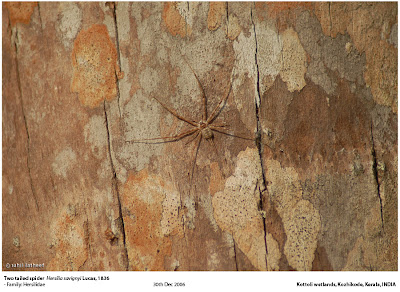



No comments:
Post a Comment